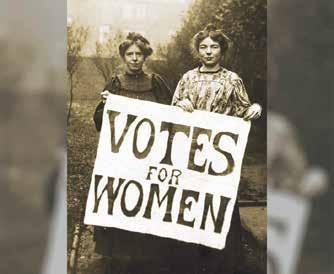
1 minute read
History of International Women’s Day
1917
International Women’s Day (IWD) has been observed since the early 1900s – a time of great expansion and turbulence in the industrialised world that saw booming population growth and the rise of radical ideologies.
1908
Great unrest and critical debate was occurring amongst women.
Women’s oppression and inequality was spurring women to become more vocal and active in campaigning for change.

In 1908, 15,000 women marched through New York City demanding shorter hours, better pay and voting rights.
1909
The first National Woman’s Day (NWD) was observed across the United States on 28 February.
Women continued to celebrate NWD on the last Sunday of February until 1913.
1910
In 1910 a second International Conference of Working Women was held in Copenhagen.
A woman named Clara Zetkin tabled the idea of an International Women’s Day.
She proposed that every year in every country there should be a celebration on the same day – a Women’s Day –to press for their demands.
The conference of over 100 women from 17 countries, representing unions, socialist parties, working women’s clubs greeted Zetkin’s suggestion with unanimous approval and thus International Women’s Day was the result.
1911
Following the decision agreed at Copenhagen in Denmark in 1911, International Women’s Day was honored the first time in Austria, Denmark, Germany and Switzerland on 19 March.
More than one million women and men attended IWD rallies campaigning for women’s rights to work, vote, be trained, to hold public







